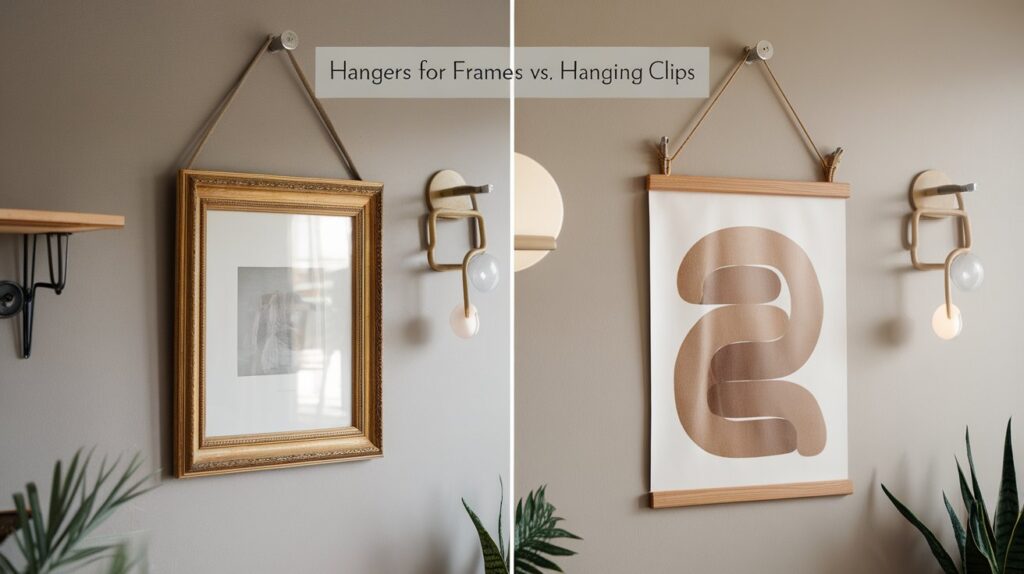Putting together an attractive, organized wall display requires more than picking the perfect artwork. How and where you display and hold your works significantly influence appearance, adjustability, and wall life. Two highly considered systems-hanger for frames and hanging clips-each have individual strengths but excel under different conditions. Knowing when and where to use them can transform a blank wall into an intelligently assembled, gallery-quality display.
What are Frame Hangers: Traditional, Heavy Duty, and Best for Heavier Items
Frame hangers are the tried-and-true method for hanging framed artwork, mirrors, and other heavier decorative items. These generally consist of brackets, D-rings, or wire systems that will support an enormous amount of weight without compromising the wall. With glass-fronted frames or with items that have special sentimental value and will be hung up long-term, this is the most secure option.
The primary advantages of their use are stability and level weight distribution. Employed alongside quality hanging hooks, they yield a flush, level finish that will not shift its position with the passage of time. They are therefore strongly recommended for formal works and gallery walls featuring heavier or more costly art pieces.
Finding Hanging Clips: Light and Perfect for Flexible Displays
On the other hand, hanging clips are ideal for temporary or light work. Small and minimalist accessories that offer immediate change and creative expression, they are ideal for casual photo displays, print exchanges, or kids’ art. Since minimal hardware is required for clips, they also minimize wall damage and are easily transportable.
This option is best used with wall hanging hooks that support light weights. For renters or those who change their interior design often, hanging clips offer a stylish, modern solution to more permanent ones.
When to Use Which? An Easy Guide
Choosing the perfect method depends on your specific use, wall, and decor. Use this simple guide to direct you:
Use frame hangers when:
- You’re hanging a heavy or valuable piece.
- You want a permanent, secure mount.
- Your goal is a polished, gallery-quality finish.
Use hanging clips when:
- You’re displaying lightweight prints or photos.
- You want to change items frequently.
- You prefer a creative or informal look.
This decision isn’t just about functionality-it also shapes the mood of your room. Think of frame hangers as your formalwear and clips as your weekend wardrobe: each has its perfect occasion.
Creating Visually Symmetrical and Structured Wall Decor
Regardless of your preferred method, the key to a cohesive design is planning. Start by selecting a theme or color scheme, and measure and mark the wall so you will not be stuck with random placement. Consider spacing between pieces and general symmetry- the use of a laser level or painter’s tape will allow you to keep things in line.
For gallery walls, combine both solutions in a strategic way. Use frame hangers for the central piece of art, with smaller, interchangeable pieces on hanging hooks around it for dynamic balance. The layering trick gives your walls personality and depth without overdoing the space.
Conclusion
The choice comes down to what you’re putting up and how much versatility you need. Even though hooks work with either system rather well, understanding their different benefits will enable you to make a wiser and more visually appealing design. Having the right hardware, a little forethought, and a pinch of ingenuity, you can create wall decor that is professional and personal.

